Short Book Reviews
Hanna Kryszewska, Poland
Hanna Kryszewska is a teacher, teacher trainer, trainer of trainers. She is a senior lecturer at the University of Gdańsk, and EU Teacher Training College where she trains pre-service teachers. She is also Director of Studies at SWPS, Sopot, Poland. She is co-author of resource books: Learner Based Teaching, OUP, Towards Teaching, Heinemann, The Standby Book, CUP, Language Activities for Teenagers, CUP and a course book series for secondary schools: ForMat, Macmillan. She is also co-author of a video based teacher training course: Observing English Lessons. Hania is a Pilgrims trainer and editor of HLT Magazine.
E-mail: hania.kryszewska@pilgrims.co.uk
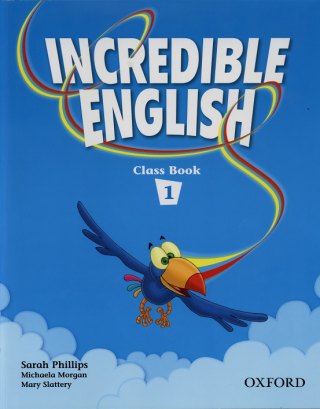
Incredible English. S. Phillips, M. Morgan & Mary Slattery. (2006) Oxford University Press. ISBN 0-19-444007-9, approx. 86pp ( depending on the part of the course); pupils book with teacher’s book, activity book, flash cards, story cards, puppet, CD’s, DVD, posters which come in nice chests ( sets also depend on the part of the course). A new four part course for young learners which sums up the state of the art of teaching young learners. Apart from the usual components, the book has excellent regular CLIL feature including the fine arts. CLIL materials include a DVD for part 1 and 2, and a series of excellent posters for part 3 and 4. Another feature worth mentioning is citizenship, in parts 1 and 2 overt while in parts 3 and 4 covert through chants in every unit. The course ‘grows up’ together with the learners and so the books are visibly different through the in-house characters. However, I do not like the omnipresent Mr Fixit, a kind of handy man, who especially in Book 2 takes over the role of parents, family members and teachers; and is the dominant adult in the lives of the in-house characters. The image of the society projected by the book is not a society in which we would like our children to grow up.
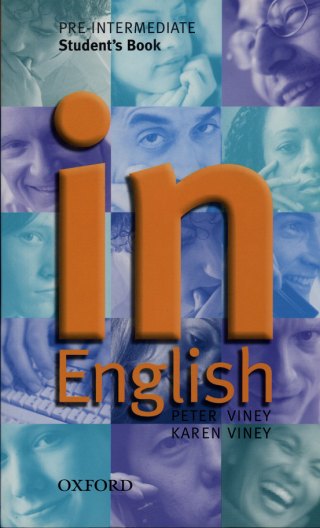
In English Pre-Intermediate. P. Viney & K. Viney. (2005) Oxford University Press. ISBN 0-19-434062-7, 239pp; approx. A5. A course for young adult and adult learners of English at A2 level. The student’s book consists of 30 units which introduce and practice language in a communicative way. The book is all inclusive so there is no extra workbook that students need to carry around; extensions to the lessons are to be found at the end of the book. The short units are manageable and make it easy for the teacher to conduct the lessons and for the students to take in the material. The texts and visual materials are up to date and the functions useful for the students. The book could be used with adult learners who need to improve their English because they need to enhance their career prospects or want to work in an English speaking environment. The size is manageable too as you can easily fit the book into your coat pocket or handbag. A good choice for less demanding students who want to see their language progress quickly and use English in everyday situations. Not so good for those who like more challenge or would like to prepare for language exams.
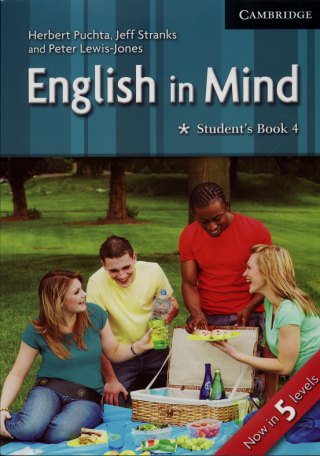
English in Mind - Student’s Book 4. H. Puchta, Jeff Stranks and P.Lewis-Jones. (2007) Cambridge University Press. ISBN 978-0-521-68269-5; pp.128. The coursebook is the fourth part of a five level course for teenagers from A1 to B2 CEFR levels ( the student’s book in question is at the B2 level). As the authors promise in the blurb, the book has very engaging content and a very good choice of topics especially from the field of psychology such as autism, disability, the brain, intelligence in different cultures, tolerance, movie therapy, famous people who are shy etc. There is also good choice of sample texts from literature e.g. from “The Curious Incident with a Dog”, “Lord of the Flies” and “ The World According to Garp”, a very good selection of topics referring to citizenship including Fair Trade, peace, love and understanding, prisoners of conscience, celebrity ambassadors and very good systematic work on pronunciation summed up at the end of the book. The authors also promise strong content of grammar and vocabulary and they keep the promise, but the exercises are repetitive and follow a routine pattern. The variety of what you can expect seems to have been exhausted in the first module and after that it is all the same type of exercises. So if you decide to choose the book for its excellent choice of topics be prepared you will have to come up with your own activities to liven up the lessons and motivate your students.
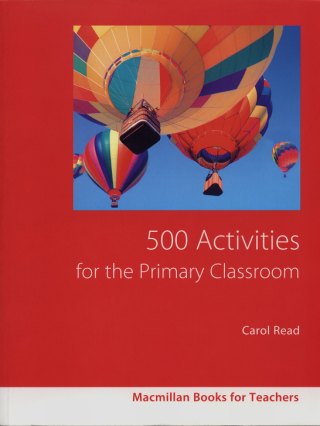
500 Activities for the Primary Classroom. C. Read. (2007) Macmillan. ISBN 978-1-4050-9907-3; 320pp, smaller than A4. A new book in the Macmillan series: Macmillan Books for teachers, series editor Adrian Underhill. This resource book comes from a well established author of children’s courses such as “Bugs” and “Superworld” which need no recommendation. In this collection of 500 practical activities the author covers all the important areas of teaching English to young learners: the four language skills, vocabulary and grammar, storytelling and drama, games, rhymes, chants and songs, art and craft, content based learning, ICT and multimedia and learning to learn. Imagine a series of resource books for teaching young learners other publishers offer, and then compress the best or most representative bits into one publication. This is what 500 Activities ... is about. Needless to say it is good value for money and ideal for training pre-service and in-service teachers of young learners. However, as the book comes from one author the sections are not all equally good, clearly the author is not expert in all the areas she covers in the book. Nevertheless the book is a great collection to dip in and to take along with you if you have to go away to teach young learners and your luggage space is limited.
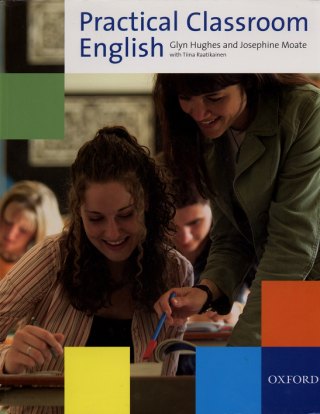
Practical Classroom English. G.Hughes & J. Moate with T. Raatikainen. (2007) Oxford University Press . ISBN 978-0-19-442279-6; pp172. The book will certainly be welcome by those who liked and have enjoyed working with “English for Primary Teachers” by Mary Slattery and Jane Willis (OUP). The new book gives the teachers, especially the pre-service ones, the language skills and classroom routine language needed for ‘accurate, authentic and idiomatic classroom language’ as well as points to think and talk about regarding certain classroom situations. The areas the book covers are: everyday classroom routines, involving the learners, managing the classroom, working with the textbook, using technology and developing skills. The book is accompanied by a CD on which all the language is recorded and delivered with accurate pronunciation and intonation to be used as a model. The first part contains mostly single sentence classroom language, the second, which I like better, contains lesson transcripts which can be used as models and material to be analysed by teachers. It is very useful that all the transcripts are to be found at the end of the book. The book is an excellent publication, ideal for self study. Yet if teacher trainers want to use the whole book or bits of it in training sessions, they will have to come up with various tasks in order turn the wealth of the material into engaging activities.



|